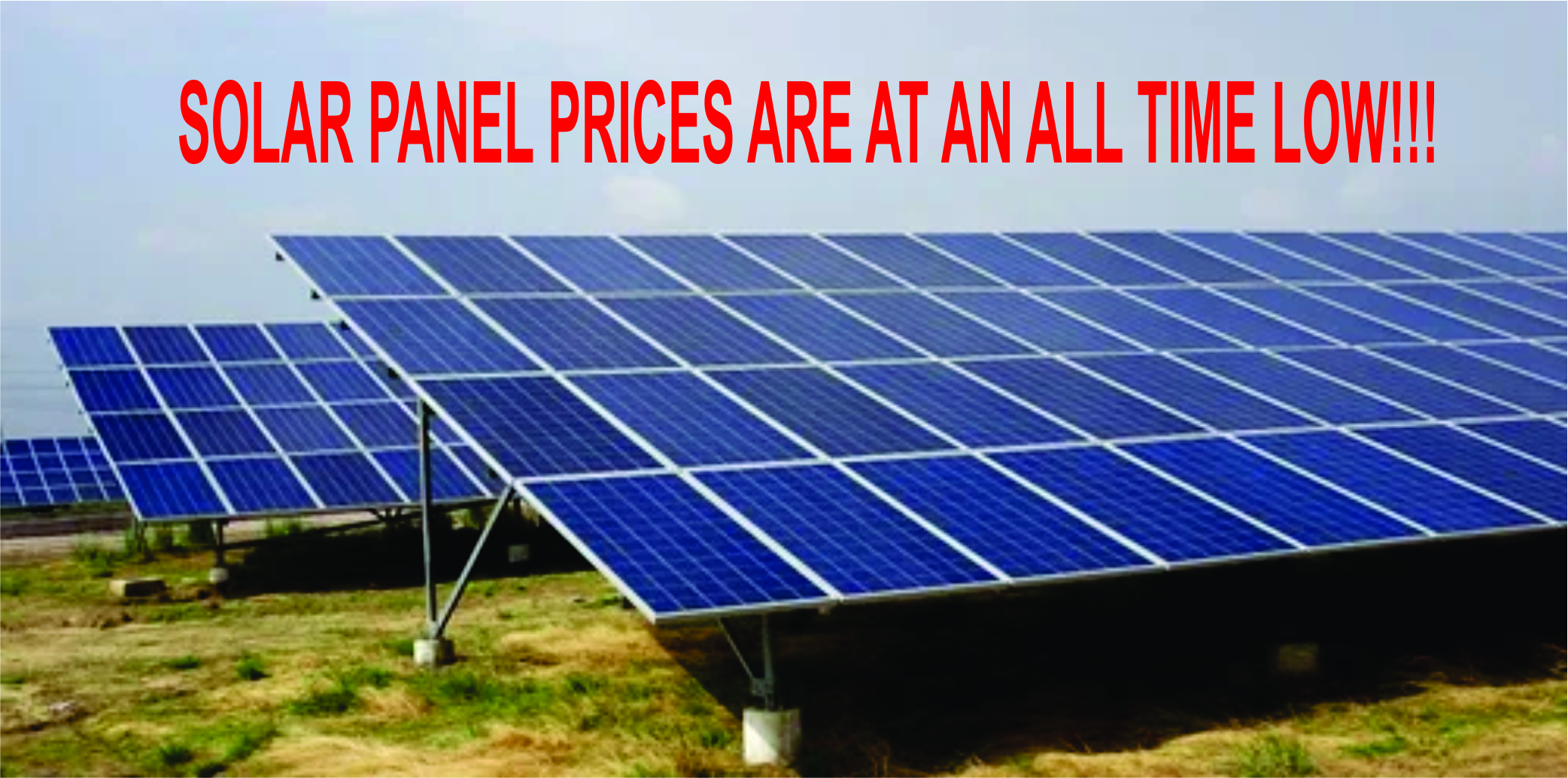𝐃𝐞𝐜𝐥𝐢𝐧𝐞 𝐢𝐧 𝐭𝐡𝐞 𝐂𝐨𝐬𝐭 𝐨𝐟 𝐒𝐨𝐥𝐚𝐫 𝐏𝐚𝐧𝐞𝐥𝐬-𝐀 𝐓𝐢𝐦𝐞𝐥𝐲 𝐎𝐩𝐩𝐨𝐫𝐭𝐮𝐧𝐢𝐭𝐲 𝐟𝐨𝐫 𝐑𝐞𝐧𝐞𝐰𝐚𝐛𝐥𝐞 𝐄𝐧𝐞𝐫𝐠𝐲 𝐈𝐧𝐯𝐞𝐬𝐭𝐦𝐞𝐧𝐭.
Since the beginning of August 2025, the average cost of solar panels has fallen significantly, encouraging more citizens and businesses to invest in renewable energy solutions.
Some industry experts attribute the recent price decline to the government’s proposed ban on solar panel imports, explaining that importers, viewing the policy as a potential threat to their businesses responded by reducing prices aggressively, a move that has made it increasingly difficult for local manufacturers to compete favorably.
Before exploring the globally recognized drivers of this trend, it is important to note that those considering an investment in renewable energy should view this as an opportunity to acquire solar/PV panels at historically low prices, ahead of any potential import restrictions.
The reduction in price could be attributed to the following factors:
𝟏. 𝐇𝐢𝐠𝐡 𝐂𝐨𝐦𝐩𝐞𝐭𝐢𝐭𝐢𝐨𝐧
The Nigerian market is currently flooded with diverse PV panel products, intensifying competition and driving prices down. Chinese manufacturers, in particular, view Nigeria as a strategic hub for solar energy in Africa and have shipped large volumes of panels into the country.
𝟐. 𝐎𝐯𝐞𝐫𝐬𝐮𝐩𝐩𝐥𝐲 𝐢𝐧 𝐭𝐡𝐞 𝐆𝐥𝐨𝐛𝐚𝐥 𝐌𝐚𝐫𝐤𝐞𝐭
Between 2023 and 2024, global manufacturers expanded production capacity far beyond market demand, leaving an estimated 150 GW of panels in stock by the end of 2023. This oversupply persisted into 2024, exerting sustained downward pressure on prices. China, the world’s dominant supplier, has since acknowledged this excess and taken steps to rein in “disordered” low price competition. Earlier this year, Chinese authorities engaged industry players to address the ongoing price war and considered production cuts, highlighting the depth of the supply to demand imbalance.
𝟑. 𝐏𝐨𝐥𝐲𝐬𝐢𝐥𝐢𝐜𝐨𝐧 𝐏𝐫𝐢𝐜𝐞 𝐂𝐨𝐥𝐥𝐚𝐩𝐬𝐞
Polysilicon which is the critical upstream material for PV modules experienced a dramatic price collapse, plunging from about $39/kg in 2022 to below $4.50/kg by late 2024. This fall filtered through the entire solar supply chain. Even with some stabilization in early 2025, high inventories have kept polysilicon prices low and consequently retaining the low cost of panels.
𝟒. 𝐖𝐞𝐚𝐤 𝐆𝐫𝐢𝐝 𝐑𝐞𝐥𝐢𝐚𝐛𝐢𝐥𝐢𝐭𝐲 𝐚𝐧𝐝 𝐑𝐢𝐬𝐢𝐧𝐠 𝐒𝐨𝐥𝐚𝐫 𝐀𝐝𝐨𝐩𝐭𝐢𝐨𝐧
The Nigerian national grid continues to struggle with limited and unreliable power supply. Many underserved communities remain without consistent electricity access, which has driven widespread adoption of solar energy as an alternative. This growing acceptance has boosted importers’ confidence, motivating them to increase shipments of solar panels into the country and further pushing prices down.
𝟓. 𝐓𝐞𝐜𝐡𝐧𝐨𝐥𝐨𝐠𝐢𝐜𝐚𝐥 𝐀𝐝𝐯𝐚𝐧𝐜𝐞𝐦𝐞𝐧𝐭𝐬
Breakthroughs in solar manufacturing technology have lowered the cost of production. Improved production techniques and materials have enhanced efficiency while reducing expenses, which translates directly into cheaper panels for end users.
𝟔. 𝐌𝐚𝐧𝐮𝐟𝐚𝐜𝐭𝐮𝐫𝐢𝐧𝐠 𝐄𝐟𝐟𝐢𝐜𝐢𝐞𝐧𝐜𝐲 𝐆𝐚𝐢𝐧𝐬
The industry’s shift toward advanced technologies such as N-type cells (TOPCon/HJT) and larger wafer formats has boosted module efficiency while reducing the cost per watt ($/W). These innovations allow each production line to deliver more output at nearly the same capital and operating cost, compounding the downward trend in panel prices.
𝐂𝐨𝐧𝐜𝐥𝐮𝐬𝐢𝐨𝐧
The current reduction in solar panel prices is largely driven by global supply factors such as oversupply, falling polysilicon costs, technological advancements, and efficiency gains in manufacturing, rather than solely by the Nigerian government’s proposed import restrictions.
While policymakers’ signals may have influenced short term market behavior, the fundamental drivers remain global. For now, the market is well supplied, keeping solar panels historically inexpensive. This presents a timely opportunity for households, businesses, and investors to adopt renewable energy at reduced capital costs.
For those considering solar adoption, now is an ideal time to engage with us to explore tailored installation solutions that maximize these cost advantages.
Okoka Darlington+234-803-9233-787
[email protected]

Leave a Reply